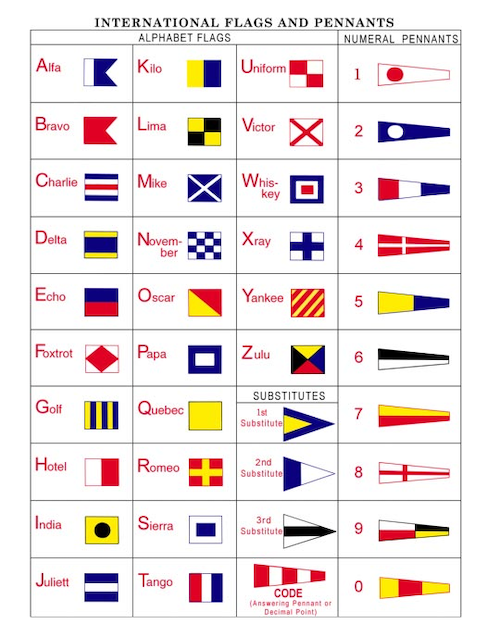
So you are new to boating, and curious as to the meaning behind boat signals, here’s some nautical flags know-how.
1. Shapes and types are important.
Nautical flags mostly take the forms of squares, though you’ll also see pendants, which are triangular with a flat tip. You’ll additionally see what’s called substitutes (alternately called repeaters), which are triangles. Since this is a “flags 101” article, we’ll focus on the squares and pendants. They’re the ones you’re more likely to see in common boating situations.
2. Learn the letters and numbers.
There are 26 square nautical flags, each representing a different letter of the alphabet. Each represents the international code word connected to the letters of the alphabet, such as Alpha, Bravo, Charlie, Delta, and so on. There are also 10 pendants for the numbers zero through nine. For the numbers 10 and larger, a boat would combine flags.
3. Colors are by choice.
The only colors you’ll find on nautical flags are black, blue, red, yellow, and white. These colors stand out quite well when seen with your own eyes on the horizon or through binoculars. Flags can be a solid color or a combination of colors, too.
4. Solo or combined, nautical flags convey meaning.
Depending on the intended message, boats fly one flag or up to seven flags in a row.
- For example, if you see the A (Alpha) flag, this means “diver down, keep clear.”
- If you see the W (Whiskey) flag, the boat has a medical emergency and needs help.
- The combination of the D (Delta) and V (Victor) flags, meanwhile, means “I’m maneuvering with difficulty and require assistance.”
- The J (Juliet) and L (Lima) flags mean “you’re running the risk of going aground.”
In fact, signals with two nautical flags typically mean some type of distress or maneuvering issue. Three or more flags can include pendants and denote things like points of the compass, geographical signals, names of ships, time and position, as well as latitude and longitude.
5. Flags are sometimes exclusive or secret language.
While boaters around the world use nautical flags to communicate common scenarios, particular situations call for their own language. Race committees combine flags to convey a race is four minutes from start, for example, or that a course has been shortened. The U.S. Navy groups together signals in ways known only to its personnel to communicate with its fellow ships.